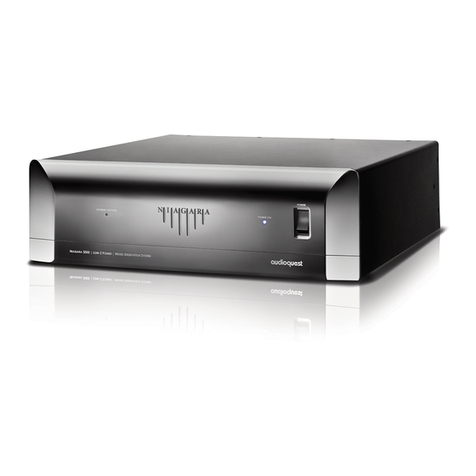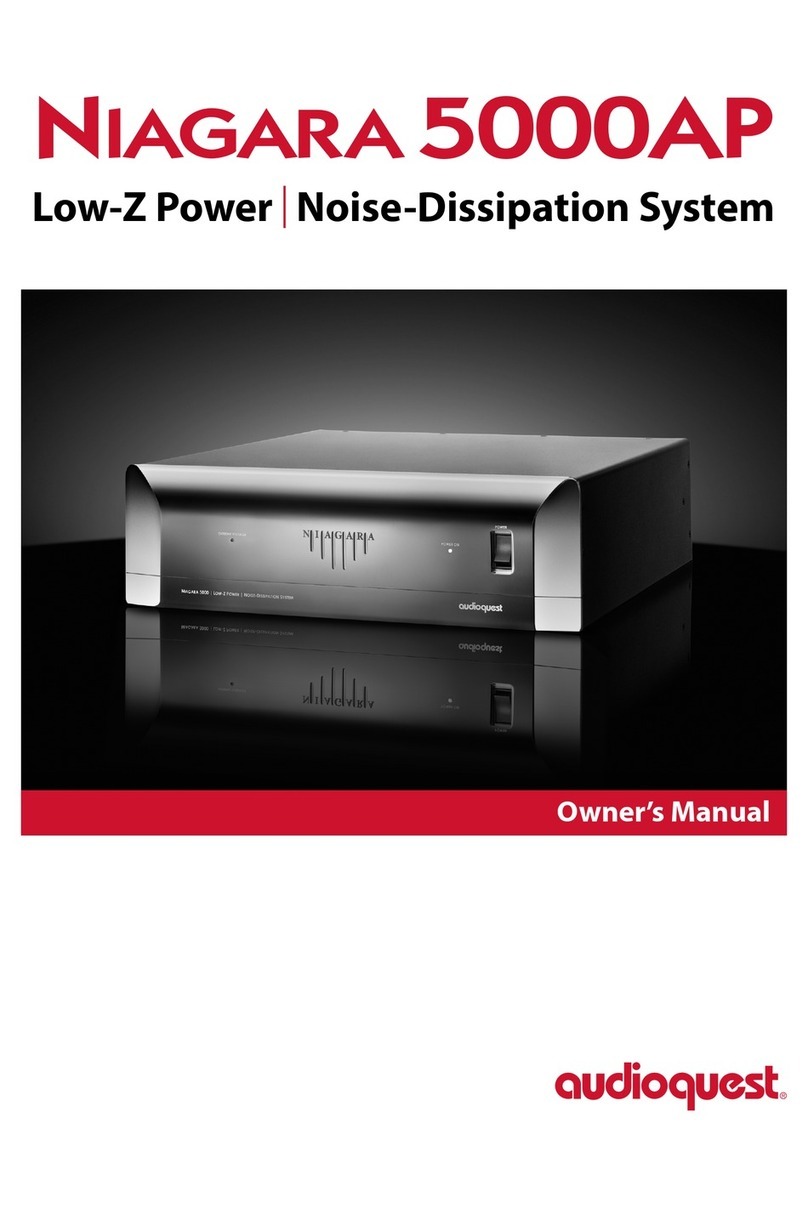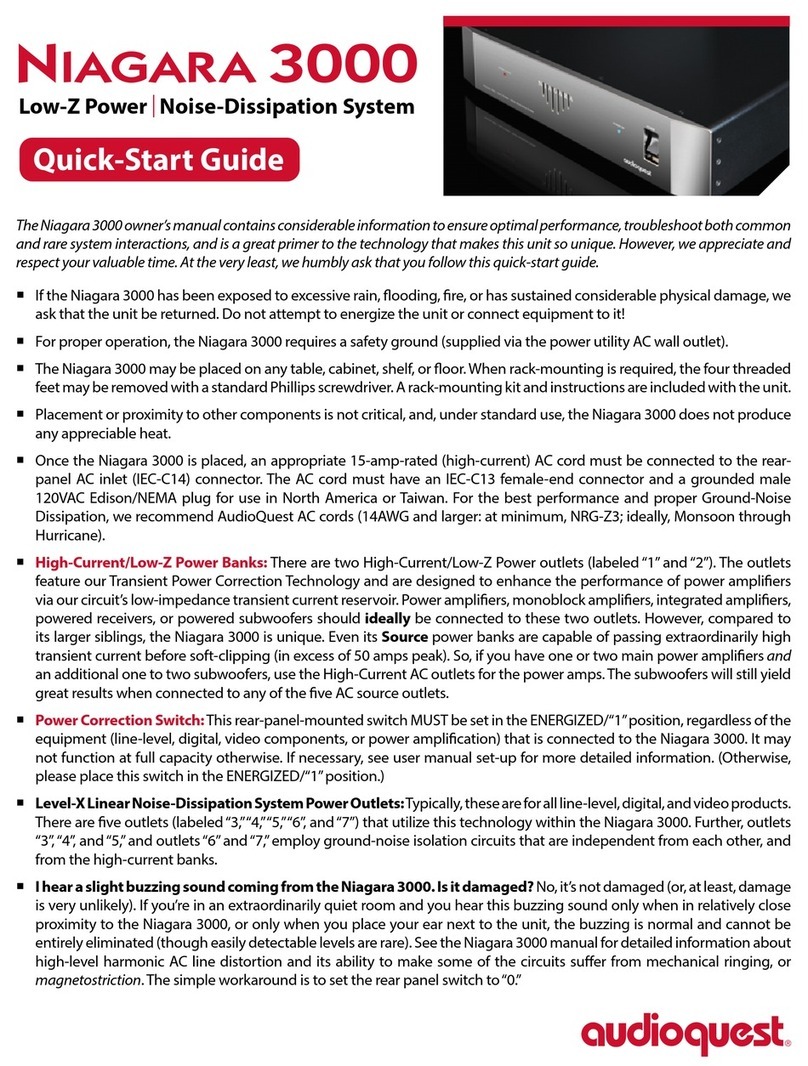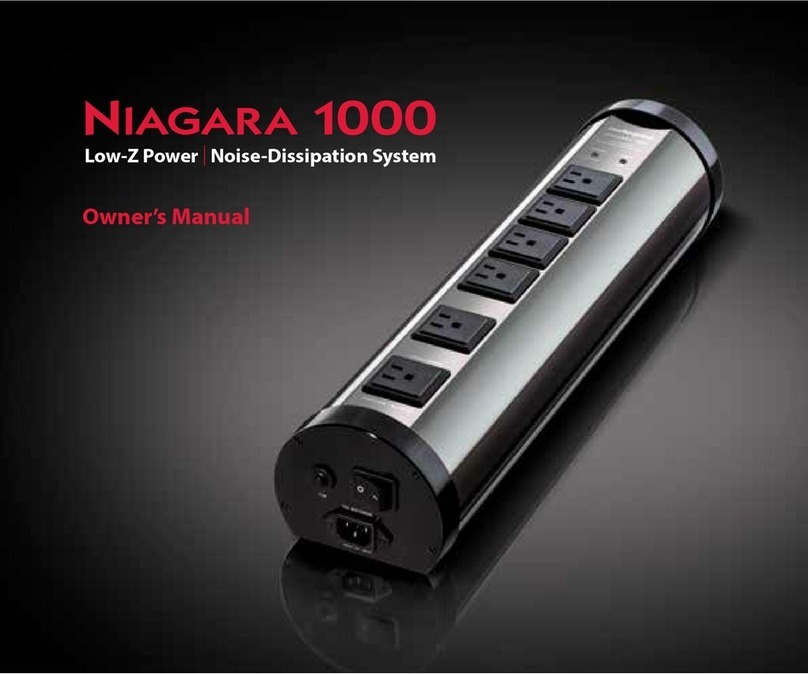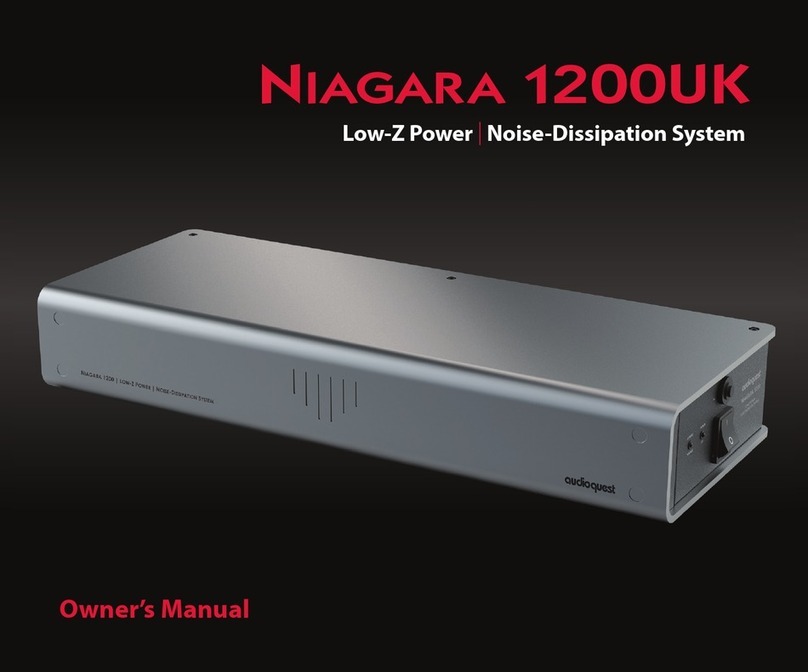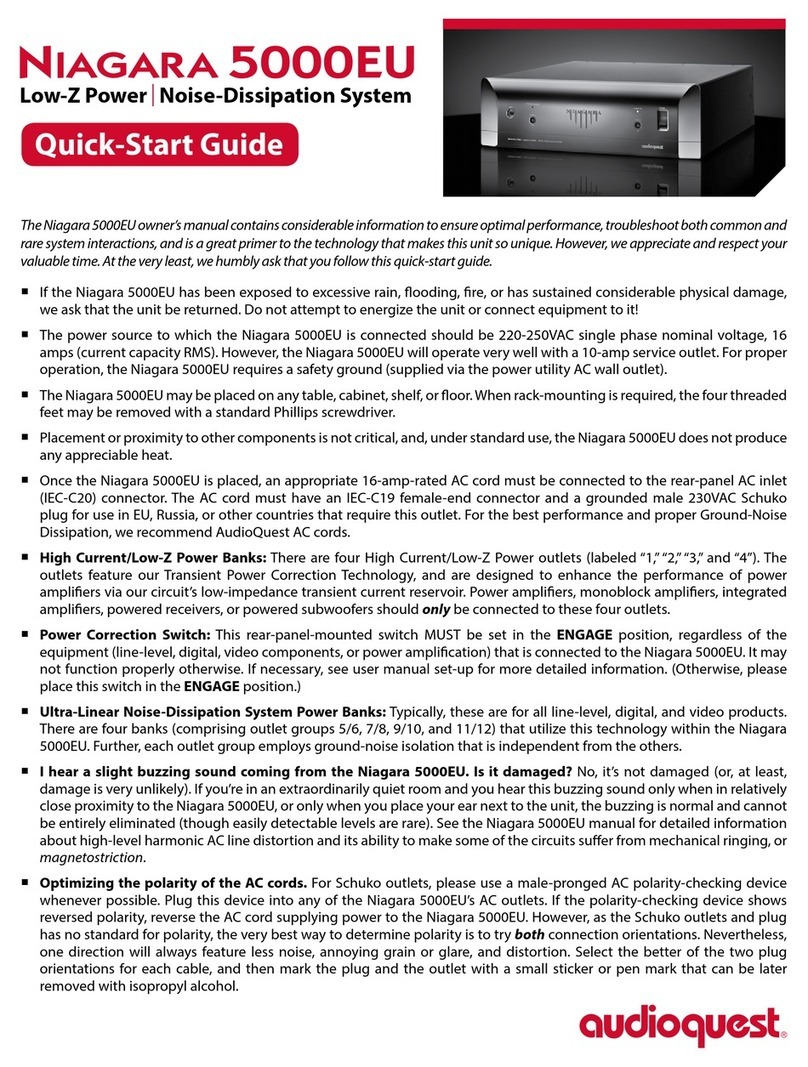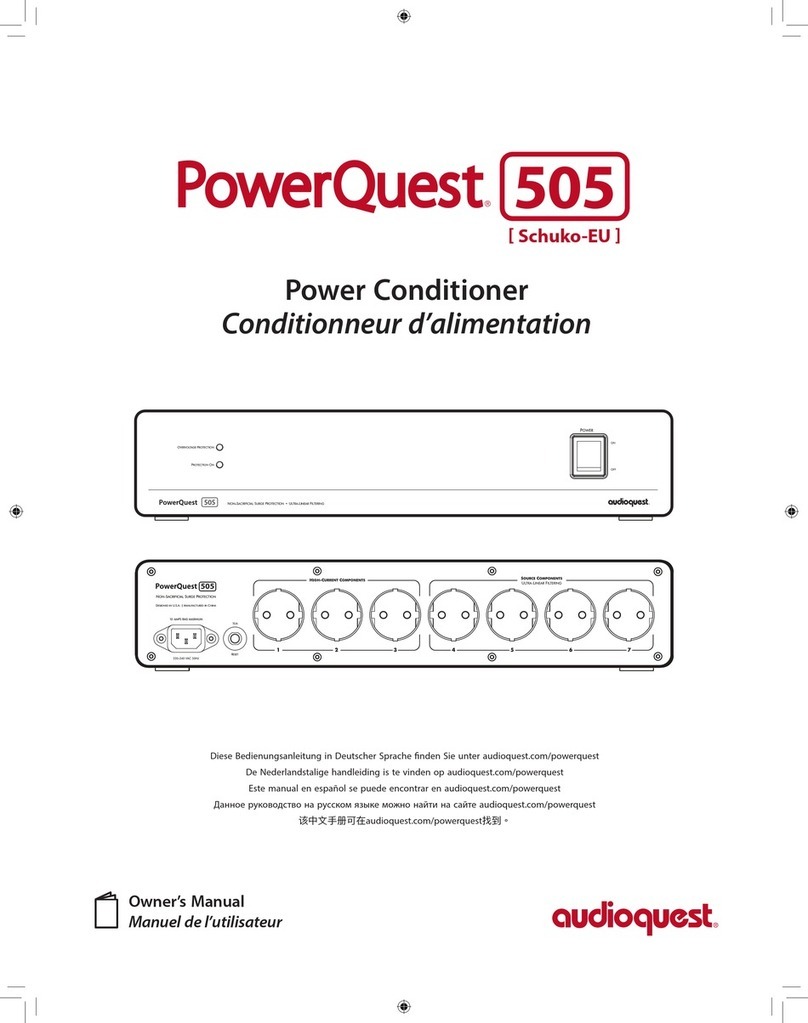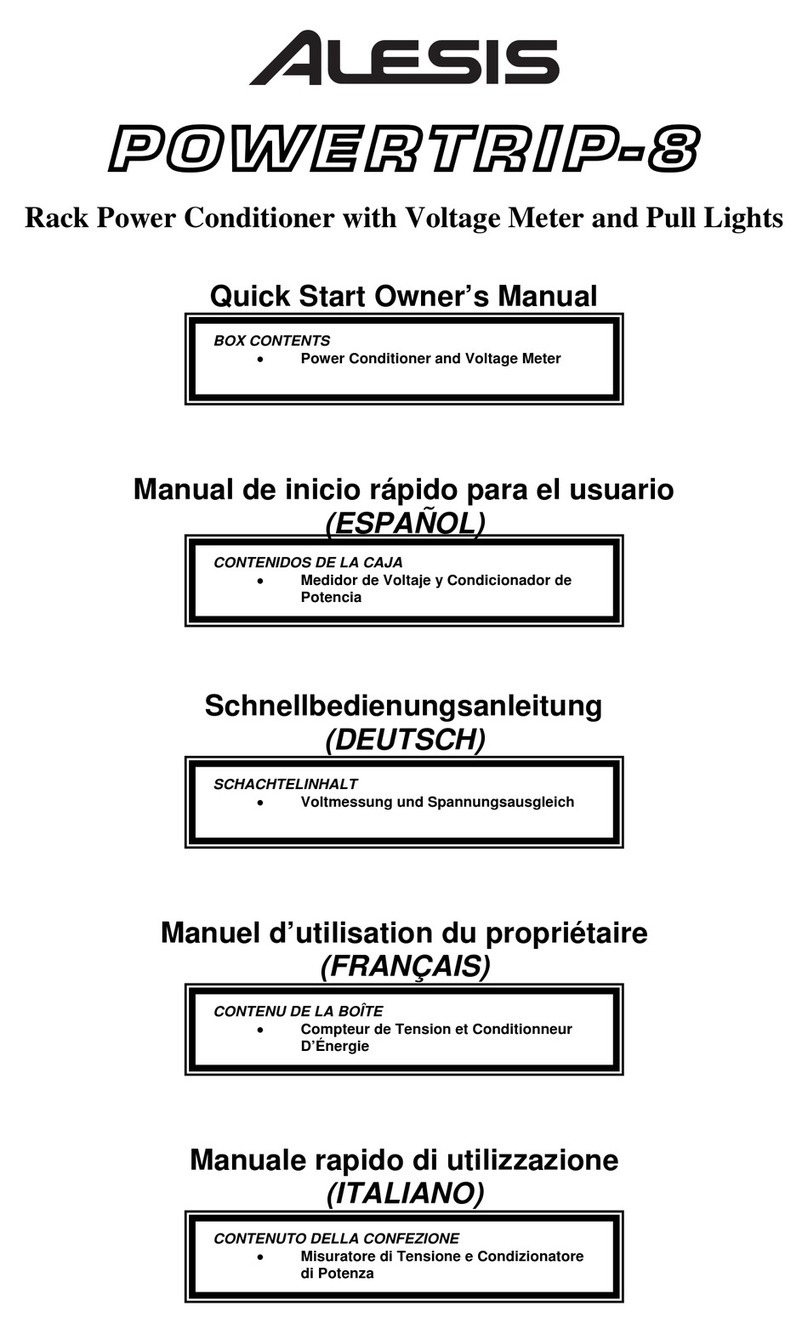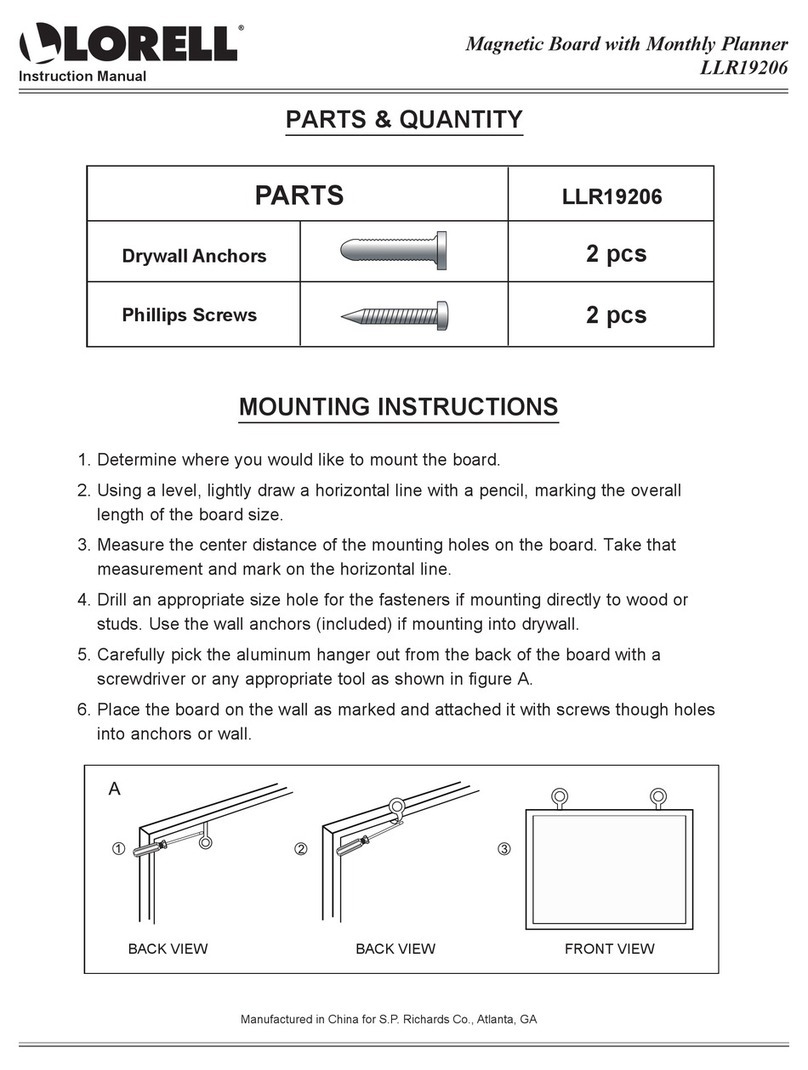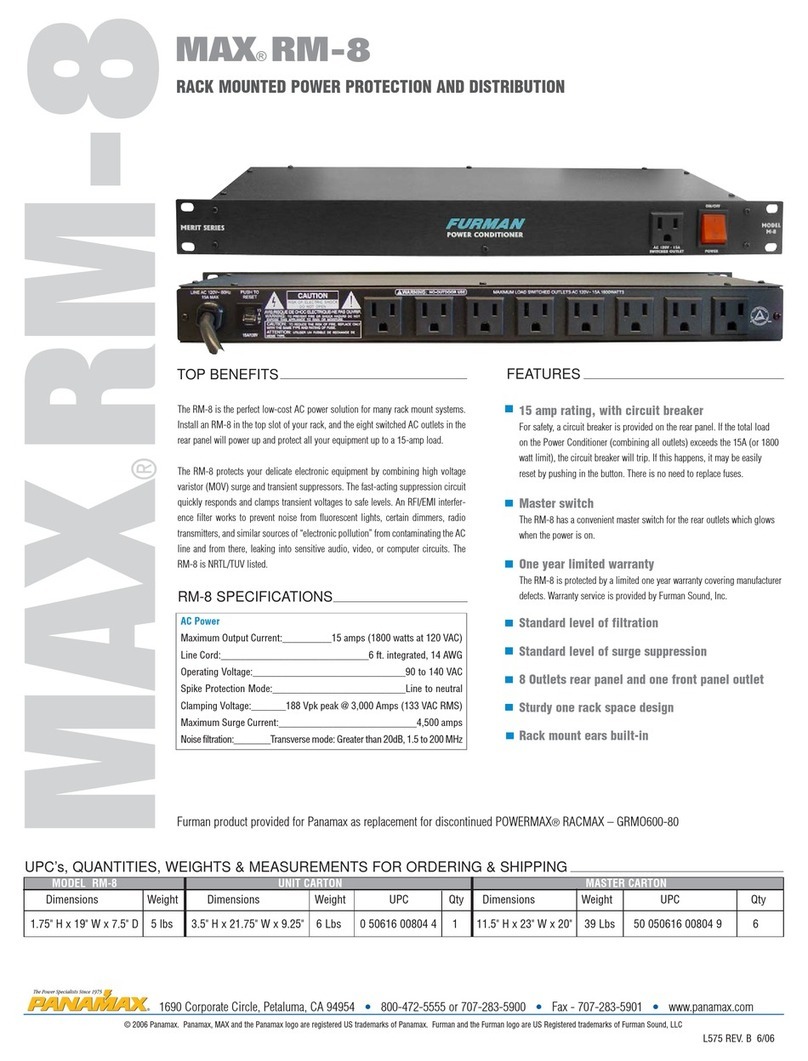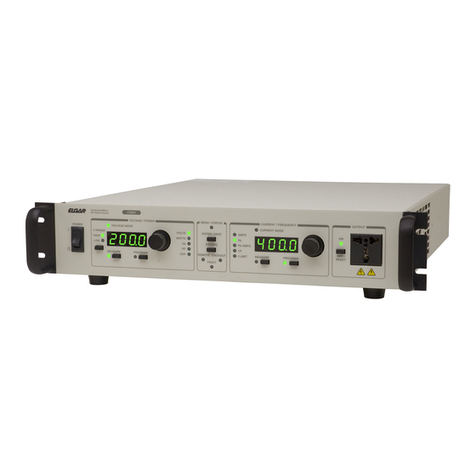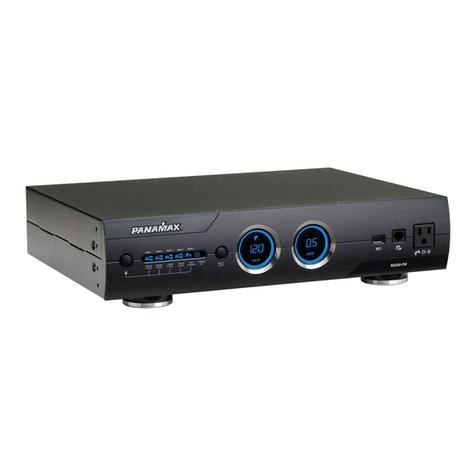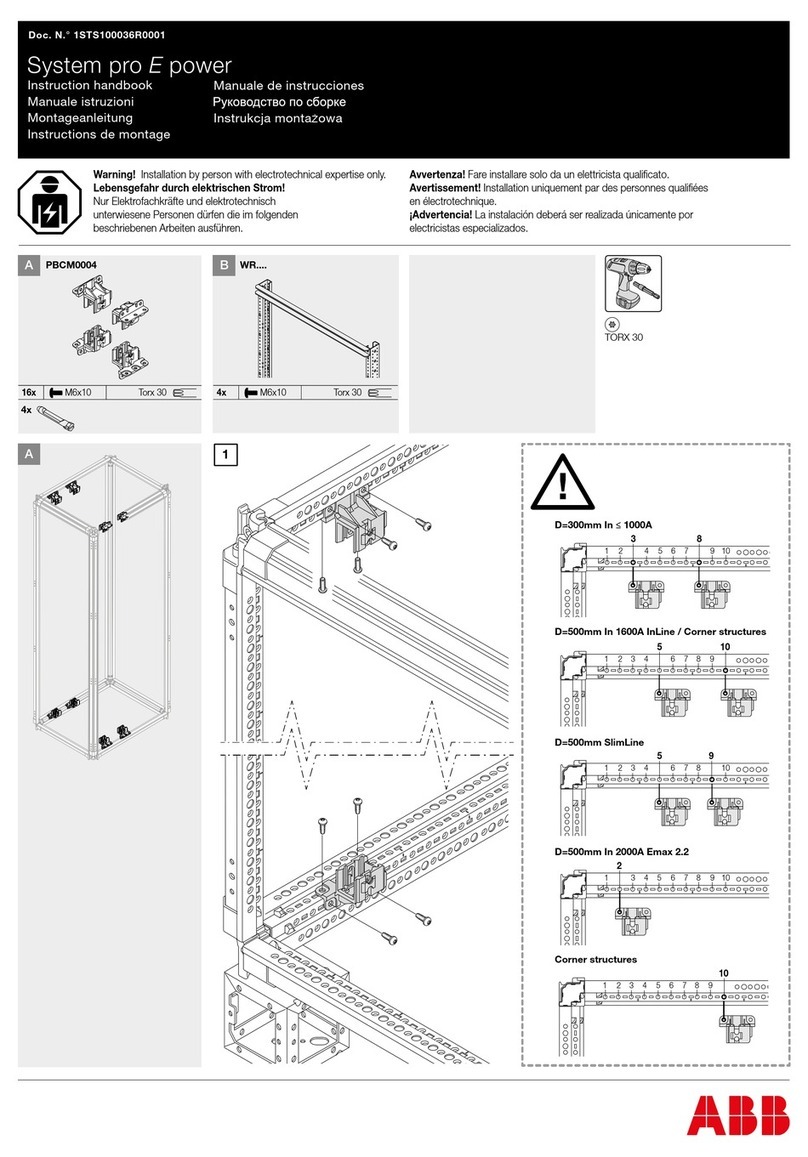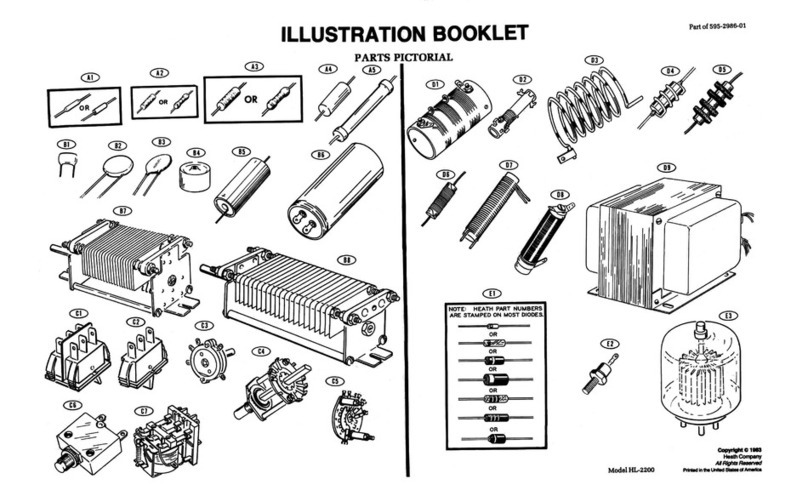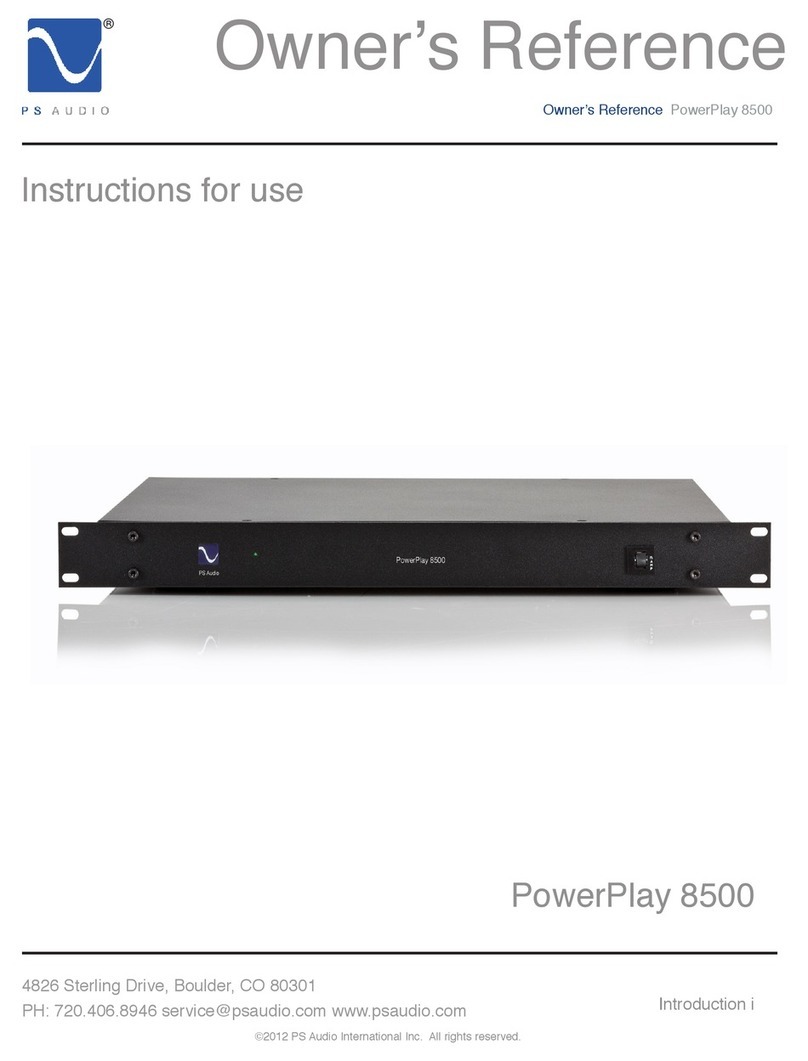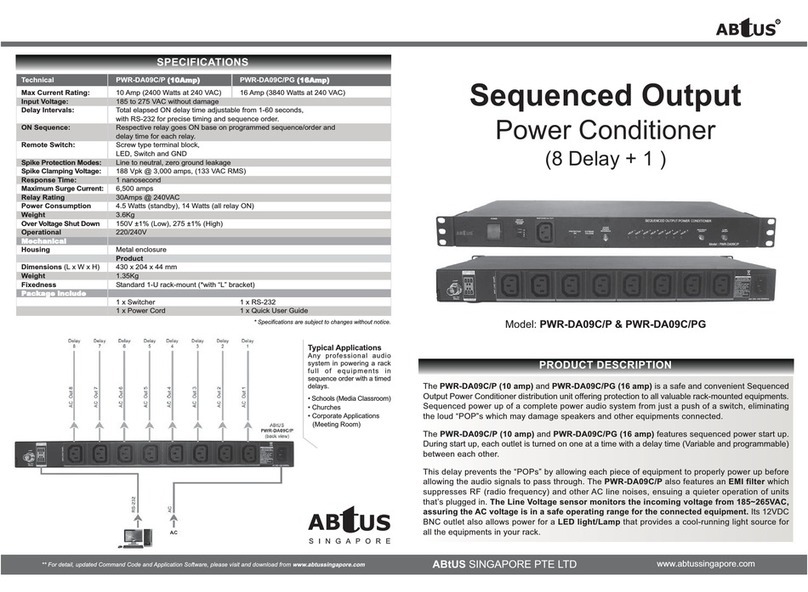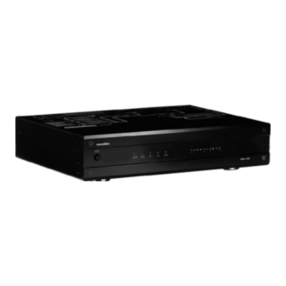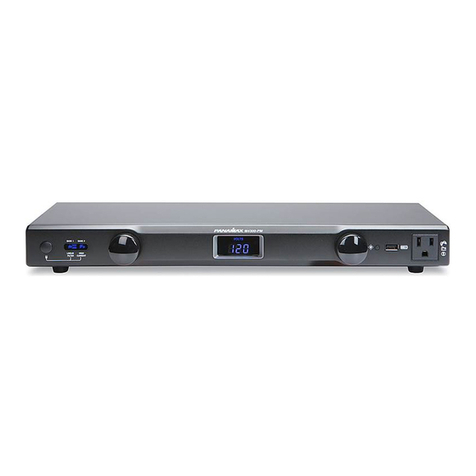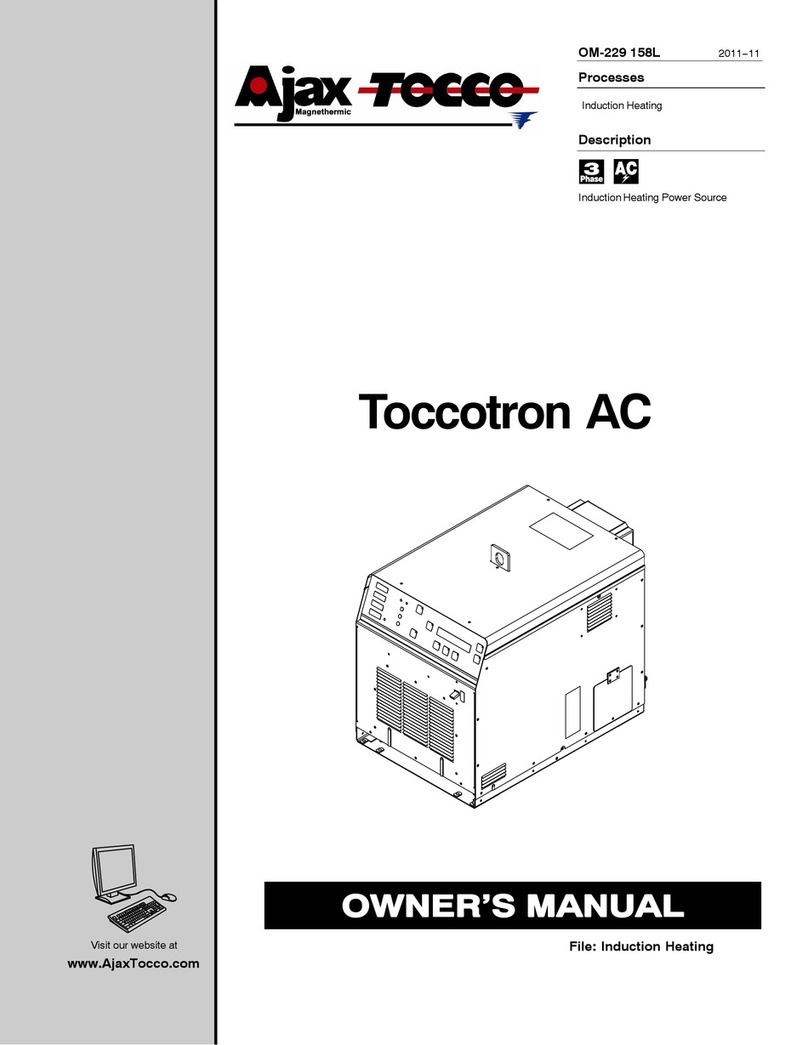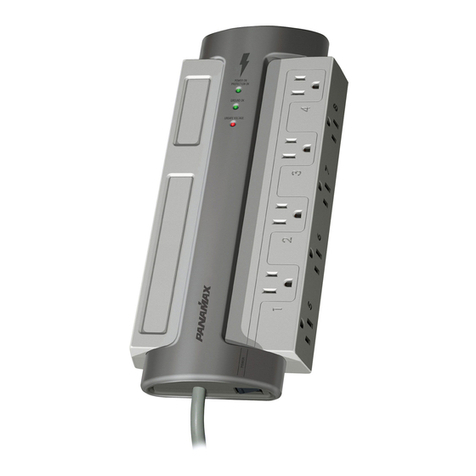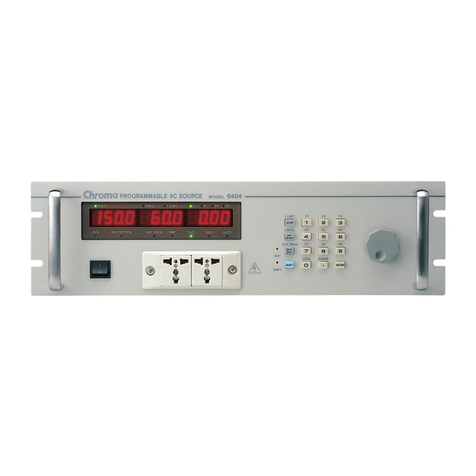
8
Operation and Continuous Use
Power Switch | Circuit Breaker and LED Power Indicator
Once the AC cords are properly connected to the AC source tap, and the components are connected to
the appropriate outlet banks, it is safe to energize the PowerQuest 707 EU. On the right-hand side of the
PowerQuest 707 EU’s front panel, there is a black rocker switch. Firmly press the rocker switch so that its
upper portion is ush with the front panel. Typically, within a couple of seconds, you should hear an audible
“clack” sound(s) from one or more relays within the PowerQuest 707 EU. At the same time, the front-panel
LED power indictor will glow green, signifying that the unit is operational. (If this does not occur, see the
“Trouble-Shooting Guide” in this manual.)
PowerQuest 707 EU Current Draw
The Transient Power Correction Circuit creates a reactive current draw of as much as 3 to 4 amps RMS at
idle (real-world draw is a small fraction of an amp), and electrical technicians who connect a current probe
to a product such as this are frequently alarmed: They suspect that the product is either broken or that it
is drawing a distressingly high amount of current from the wall outlet (akin to an AV receiver left in full
operational mode).
This is far from the truth. If the PowerQuest 707 EU was consuming that much current (or even 30% of that
level), it would need to dissipate the energy loss in heat. It would be quite warm (even hot) to the touch, just
like most power ampliers while in operation. In fact, the PowerQuest 707 EU runs cool, precisely because
this current reading is false. The circuit utilizes massive capacitive reactance across the AC line, which, akin
to a battery, will both absorb and immediately release the current several times per second. Further, when
incorporated with power supplies such as those found in power ampliers, the current readings actually
come down. This is due to what’s known as a vector load, and it’s quite dynamic in an audio/video system.
In this scenario, there is one thing that can run somewhat warmer than it might otherwise: the AC cord that
supplies power to the PowerQuest 707 EU. This is because the wiring and the circuit breaker that supply
power to PowerQuest 707 EU simply look at RMS current and do not distinguish between reactive loads,
resistive loads, or inductive loads, but your utility does.
This circuit and many like it have been utilized for many years, and, when tested into buildings with
absolutely no loads present aside from the transient power correction circuit, there was virtually zero power
draw from the utilities’ power meter. Still, in an age where so-called “smart meters” are omnipresent, and
some utilities may or may not change their standards for “what type of power or current is suitable for
billing,” we have gone to great lengths to oer an alternative to those who may be concerned, but who
nevertheless wish to achieve the best possible audio/video performance.
Overvoltage Protection Indicator
One portion of the PowerQuest 707 EU’s non-sacricial surge protection is dedicated to a fast-acting extreme
voltage shutdown circuit. If more than 270VAC is present on the incoming AC line for more than a quarter of a
second, the circuit will instantly open a high-current relay that will disengage the AC power from all the PowerQuest
707 EU’s AC outlets, activating the red front-panel LED “Overvoltage Protection” warning indicator. Once the event
has passed, or the building wiring fault has been corrected, the circuit will automatically re-engage.
